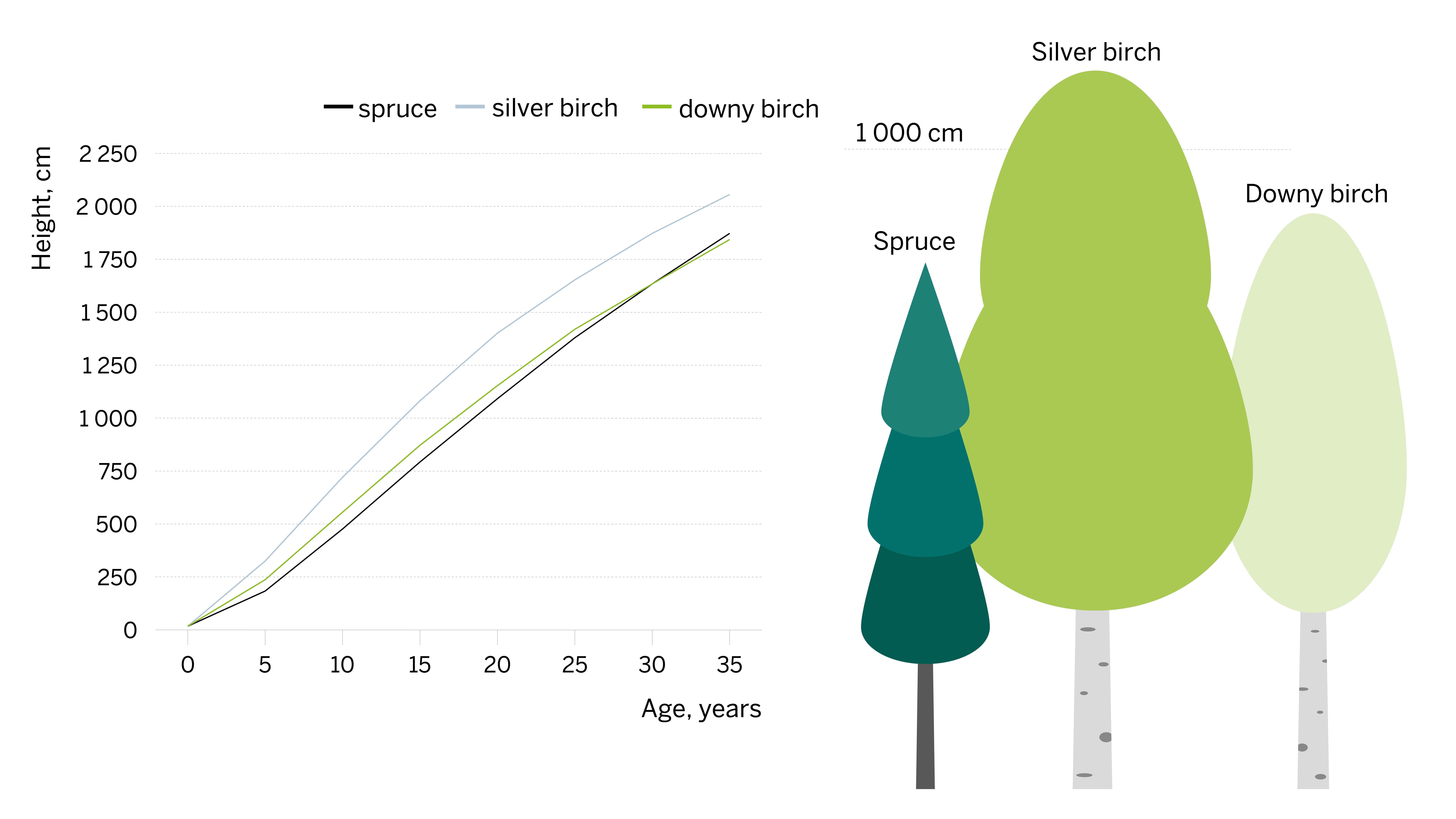The traditional advice for commercial forests was to focus on pine and spruce and remove any deciduous trees at an early stage to obtain as much valuable log wood as possible from the forest.
Recently, the idea of a mixed forest, where deciduous trees are allowed more space alongside spruce and pine, has gained a stronger foothold in forest management thinking.
“On barren sites, a pure pine forest is still recommended. There is more room for variation on lush sites. These days, such sites are often renewed using spruce, but it would often make sense to diversify the range of tree species, forming either smaller stands or a mixed forest,” says Saija Huuskonen, Senior Scientist at Natural Resources Institute Finland.
A variety of tree species provides mixed forests with more diverse ground vegetation and a wider range of other species as well. For example, there are more edible mushroom species.
Economic considerations also speak for mixed forests.
“Global warming accelerates the spread of spruce pest species such as bark beetles and root rot. In a forest that also has trees other than spruce, pests perhaps don’t spread as quickly.”
As Huuskonen points out, we do not yet know how quickly the climate will change, and what tree species will be in demand 50 years from now.
“Spruce is currently the most highly valued species, and hardly any birch is cultivated. Future needs may be very different, which is why we should maintain a wide range of forest species just in case.”
Preparing for a changing climate
In our current climate conditions, a pure spruce forest yields more wood than a mixed forest of spruce and birch. Birch trees grow quickly and reach maturity before spruce trees, but they require more space to grow. Research indicates that a birch mix usually reduces the overall volume of wood and even in the best case, has a neutral impact on the volume.
As the price of spruce is currently higher, a spruce forest generates more money.
Mixed forests are about one’s attitude to future damage risk and surprises brought about by climate change, and whether one wants to emphasise values other than the highest possible yield in forest management.
“At current prices, growing a pure spruce forest is the economically most profitable alternative, but climate change will increase the risk of spruce damage. Mixed forests may be a more profitable alternative if they reduce the risk of damage and can secure forests’ vitality and ability to store carbon,” Huuskonen says.
A mixed forest emerges naturally
If you want to grow a mixed forest, what should you do?
“In terms of biodiversity, sturdy aspen and sallow are the most important trees. From an economic perspective, silver birch is number one, as it is by far the fastest growing deciduous species.”
A deciduous mix usually emerges naturally in a coniferous young stand. As deciduous trees spread easily and grow rapidly, they sprout up among spruce seedlings.
You can get a good mixed forest by leaving deciduous trees to grow during early cleaning, carried out when the spruce stand is five years old, and in pre-commercial thinning, carried out at the age of ten.
“It’s best to retain birch trees that have the healthiest crown and are as tall as or slightly shorter than the spruce trees, and clear generous growth space for them. Silver birch needs more space than spruce,” Huuskonen says.
“To promote biodiversity, you can also leave other deciduous trees in open spots. A good rule of thumb is to retain all tree species growing in the young stand.”
Measures to preserve a mixed forest must also be taken during first thinning, carried out when the spruce stand has been growing for approximately 30 years.
Birch grows faster at first: Longitudinal growth of spruce, silver birch and downy birch

This text was published in Metsä Group’s Viesti 4/2023.
Text Antti Kivimäki
Photo Metsä Group
Illustration Berry Creative
